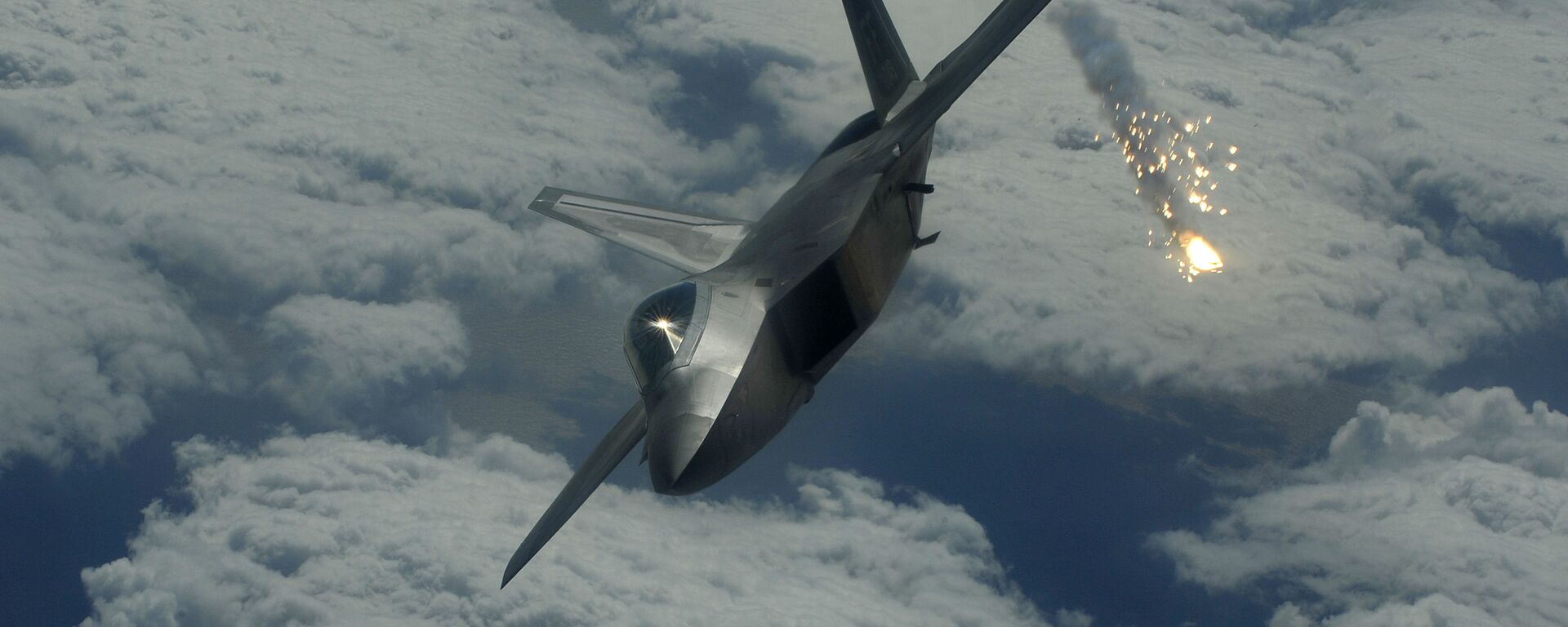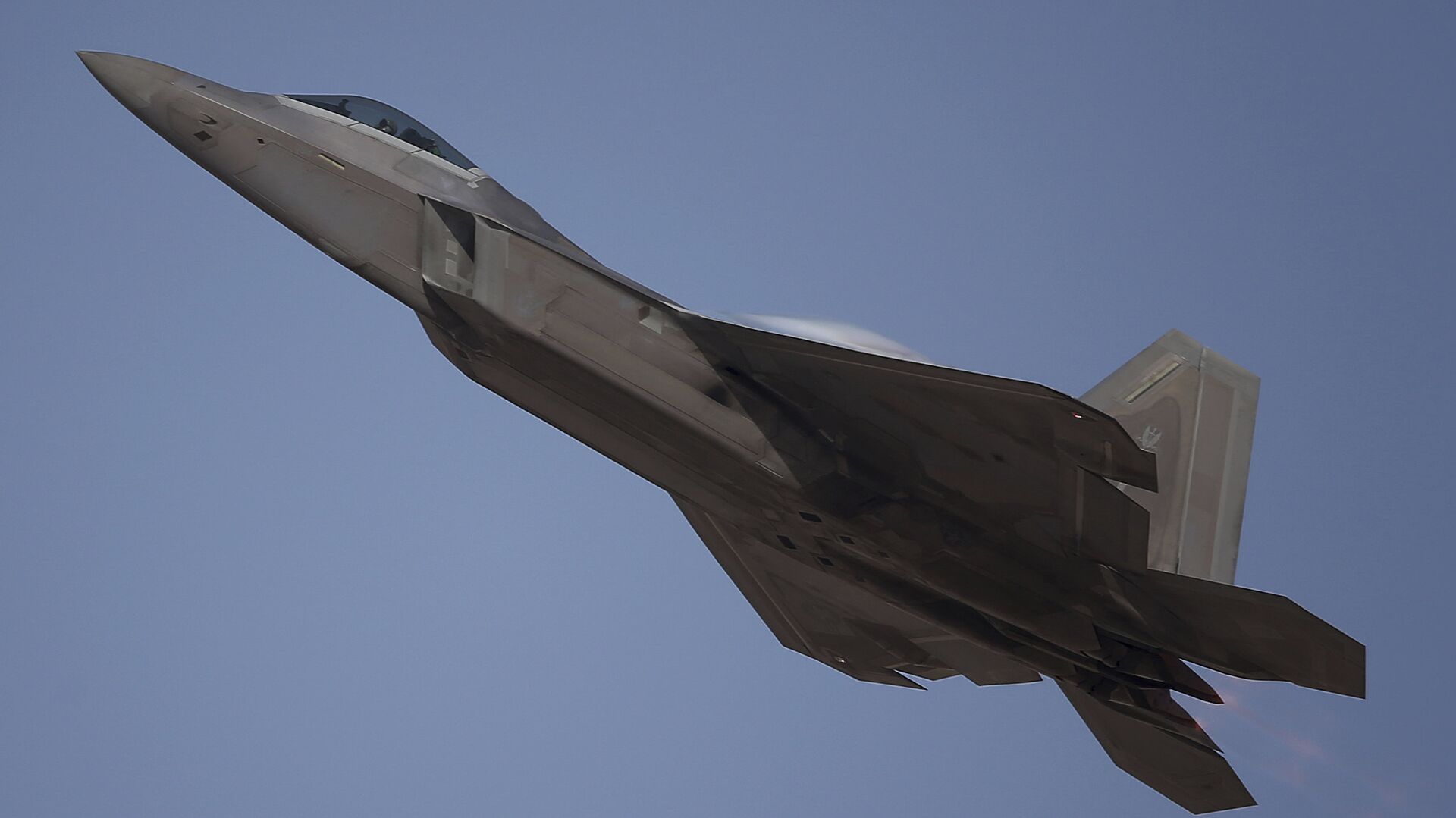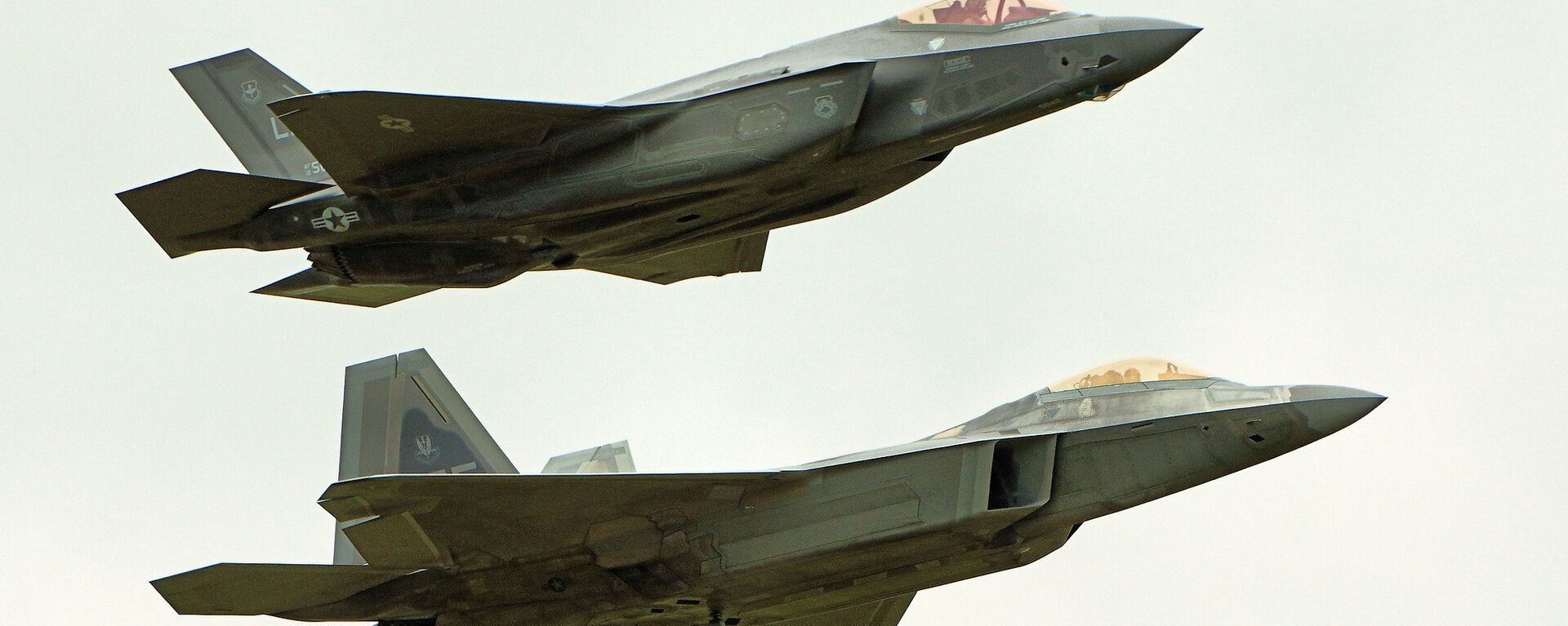https://sputnikglobe.com/20210918/us-air-force-reveals-conditions-to-lift-decades-long-ban-on-f-22-raptor-exports-1089191776.html
US Air Force Reveals Conditions to Lift Decades-Long Ban on F-22 Raptor Exports
US Air Force Reveals Conditions to Lift Decades-Long Ban on F-22 Raptor Exports
Sputnik International
US Air Force Reveals Conditions to Lift Decades-Long Ban on F-22 Raptor Exports
2021-09-18T20:00+0000
2021-09-18T20:00+0000
2022-10-24T09:35+0000
f-22 raptor
us
export
f-35
https://cdn1.img.sputnikglobe.com/img/106266/91/1062669120_0:159:2557:1597_1920x0_80_0_0_667f7fd39ea0f96efaed9bd9c632d4df.jpg
The US Air Force has declassified a report to Congress exploring sales of the F-22 Raptor air superiority-oriented American fighter jet, which has never been offered for purchase abroad, The Drive website reported, citing documents obtained under a Freedom of Information Act (FOIA) request.The F-22 programme was slapped with an export ban in September 2006 by the US Congress due to the jet containing numerous technologies, including stealth, which had never been exported. Although lawmakers decided that these technologies should be kept secret even from allies out of fear of falling into the hands of adversaries, they nonetheless sought to explore ways to make the F-22 available to sell. Several reports have been made since the end of the 1990s, as the jet was still in development, but the most recent, presented in March 2010, has remained classified until now.Separate Export Version NeededAccording to media website, the US Air Force, which prepared the report, suggested building an export version of the jet, dubbed Foreign Military Sales (FMS) F-22. The original F-22 included several components used in the F-35, a fighter specifically built to sell, and had a precedent to be cleared for purchase "as is". However, at least three critical systems were unique to the F-22: two were blacked out in the heavily-redacted report and a third known to be the Raptor's advanced 2-D thrust vectoring and super-cruise capabilities. These systems would either be replaced or modified to be allowed to be sold to the military of other countries.Some F-22 systems similar to those installed in the F-35 would have to be replaced. An FMS F-22 would feature the Joint Strike Fighter's AN/APG-81 active electronically-scanned array (AESA) radar instead of the domestic AN/APG-77. Among other things that would need to be changed would be the jet's avionics with "mission data files" that would need to be tailored per individual client, as well as stealth components, coatings and weapons.To add to the list of peculiarities, an FMS F-22 would provide potential customers with more sovereignty over their jets than an F-35. The latter comes with the pre-installed cloud Autonomic Logistics Information System (ALIS) and hard-wired software, created and operated solely by the US (except for F-35 Adir supplied to Israel). FMS F-22 owners, on the other hand, would have full control over their jets, although they wouldn't be able to produce their parts domestically, as is the case with F-35s.FMS F-22 Costs: For Customers and for the USThe authors of the website's report projected production costs of an FMS F-22 based on two scenarios: whether it would start immediately or if purchased after the production of US military jets. The latter happened in 2012, after the US slashed an order from 750 jets down to 187.One reason for the order drop was the Raptor's price tag: it cost around $338 million per airframe versus around $80 million for a normally-equipped F-35. However, export scenarios featured a different price: from $232.5 million ($259 million in 2021 prices), if the product line for jets had to be revived, to $165 million apiece ($184 million in modern prices) in case of continuous manufacturing.One apparent reason for price reduction was an expectation that prolonged production of the Lockheed Martin F-22 for export purposes would push down procurement and operating costs for all countries, including in the US. The report did not specify those potential benefits for the US, however, and nor did it factor in the cost of training programmes for new pilots.Although ways to make the F-22 jets viable for sale were outlined, Congress never acted upon the information. The program was later halted because the F-22 jets were focused on air-to-air combat and potential US adversaries Russia and China had not progressed much with their own fighter programmes according to the Pentagon. Concurrently, the emerging F-35 fifth-generation stealth jet offered greater versatility at a lower price and the fast-tracked ability to sell it to other militaries.The F-22 initially sparked interest in potential buyers: Israel, Japan and Australia all explored the possibility of purchasing them. However, all three countries eventually declined to buy, in part due to the export ban and the incoming F-35. The F-22 purchase programme, which cost $32.4 billion to develop and $35 billion to purchase from Lockheed Martin, was put on ice.
https://sputnikglobe.com/20210515/us-air-force-plans-to-put-down-problematic-lockheed-martin-f-22-replace-it-with-sixth-gen-jet-1082897409.html
https://sputnikglobe.com/20210917/us-house-armed-services-committee-warns-troubled-f-35-program-may-become-unsustainable-at-its-peak-1089145708.html
Sputnik International
feedback@sputniknews.com
+74956456601
MIA „Rosiya Segodnya“
2021
Tim Korso
https://cdn1.img.sputnikglobe.com/img/07e6/03/0d/1093831826_0:0:216:216_100x100_80_0_0_e3f43a960af0c6c99f7eb8ccbf5f812c.jpg
Tim Korso
https://cdn1.img.sputnikglobe.com/img/07e6/03/0d/1093831826_0:0:216:216_100x100_80_0_0_e3f43a960af0c6c99f7eb8ccbf5f812c.jpg
News
en_EN
Sputnik International
feedback@sputniknews.com
+74956456601
MIA „Rosiya Segodnya“
Sputnik International
feedback@sputniknews.com
+74956456601
MIA „Rosiya Segodnya“
Tim Korso
https://cdn1.img.sputnikglobe.com/img/07e6/03/0d/1093831826_0:0:216:216_100x100_80_0_0_e3f43a960af0c6c99f7eb8ccbf5f812c.jpg
f-22 exports ban lifting
US Air Force Reveals Conditions to Lift Decades-Long Ban on F-22 Raptor Exports
20:00 GMT 18.09.2021 (Updated: 09:35 GMT 24.10.2022) The jet, developed and deployed well before the F-35 stealth fighter, contains a number of still classified technologies which Washington fears might be leaked to its adversaries if the F-22 was to hit the market.
The US Air Force has declassified a report to Congress exploring sales of the F-22 Raptor
air superiority-oriented American fighter jet, which has never been offered for purchase abroad, The Drive website reported, citing
documents obtained under a Freedom of Information Act (FOIA) request.
The F-22 programme was slapped with an export ban in September 2006 by the US Congress due to the jet containing numerous technologies, including stealth, which
had never been exported. Although lawmakers decided that these technologies should be kept secret even from allies out of fear of falling into the hands of adversaries, they nonetheless sought to explore ways to make the F-22 available to sell. Several reports have been made since the end of the 1990s, as the jet was still in development, but the most recent, presented in March 2010, has remained classified until now.
Separate Export Version Needed
According to media website, the US Air Force, which prepared the report, suggested building an export version of the jet, dubbed Foreign Military Sales (FMS) F-22. The original F-22 included several components used in the F-35, a fighter specifically built to sell, and had a precedent to be cleared for purchase "as is". However, at least three critical systems were unique to the F-22: two were blacked out in the heavily-redacted report and a third known to be the Raptor's advanced 2-D thrust vectoring and super-cruise capabilities. These systems would either be replaced or modified to be allowed to be sold to the military of other countries.
Some F-22 systems similar to those installed in the F-35 would have to be replaced. An FMS F-22 would feature the Joint Strike Fighter's AN/APG-81 active electronically-scanned array (AESA) radar instead of the domestic AN/APG-77. Among other things that would need to be changed would be the jet's avionics with "mission data files" that would need to be tailored per individual client, as well as stealth components, coatings and weapons.
To add to the list of peculiarities, an
FMS F-22 would provide potential customers with more sovereignty over their jets than an F-35. The latter comes with the pre-installed cloud Autonomic Logistics Information System (ALIS) and hard-wired software, created and operated solely by the US (except for F-35 Adir supplied to Israel). FMS F-22 owners, on the other hand, would have full control over their jets, although they wouldn't be able to produce their parts domestically, as is the case with F-35s.
FMS F-22 Costs: For Customers and for the US
The authors of the website's report projected production costs of an FMS F-22 based on two scenarios: whether it would start immediately or if purchased after the production of US military jets. The latter happened in 2012, after the US slashed an order from 750 jets down to 187.
One reason for the order drop was the Raptor's price tag: it cost around $338 million per airframe versus around $80 million for a normally-equipped F-35. However, export scenarios featured a different price: from $232.5 million ($259 million in 2021 prices), if the product line for jets had to be revived, to $165 million apiece ($184 million in modern prices) in case of continuous manufacturing.
One apparent reason for price reduction was an expectation that prolonged production of the Lockheed Martin F-22 for export purposes would push down procurement and operating costs for all countries, including in the US. The report did not specify those potential benefits for the US, however, and nor did it factor in the cost of training programmes for new pilots.

17 September 2021, 04:16 GMT
Although ways to make the F-22 jets viable for sale were outlined, Congress never acted upon the information. The program was later halted because the F-22 jets were focused on air-to-air combat and potential US adversaries Russia and China had not
progressed much with their own fighter programmes according to the Pentagon. Concurrently, the emerging F-35 fifth-generation stealth jet offered greater versatility at a lower price and the fast-tracked ability to sell it to other militaries.
The F-22 initially sparked interest in potential buyers: Israel, Japan and Australia all explored the possibility of purchasing them. However, all three countries eventually declined to buy, in part due to the export ban and the incoming F-35. The F-22 purchase programme, which cost $32.4 billion to develop and $35 billion to purchase from Lockheed Martin, was put on ice.







